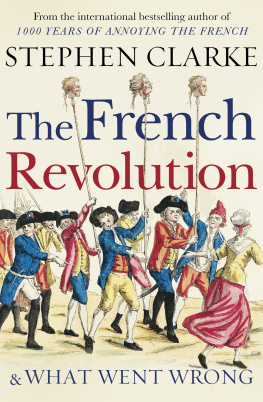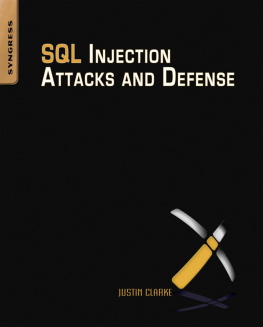Table of Contents
Historic Treasures of Uzbekistan
Journey of Discovery Along the Silk Road
Peter Clarke

1. Why Uzbekistan?
I dont do sunbathing. I dont do sitting on a beach or round a swimming pool. I would be bored out of my mind! If I go to a new destination, I like to explore and find out more about the place that I have arrived at.
First and foremost, I am a travel photographer and writer. I like to visit new places that are of particular interest to me. The world is now such a small place and there are many more places to see and I dont expect to go back, unless that place has something special to make me want to go back again.
Uzbekistan was a bit like that.
When I announced to my friends and family that I was embarking on a trip to Uzbekistan, not only did they look at me with dumbfounded expressions on their faces, they nearly all said to me, Where on earth is Uzbekistan and why do you want to go there? At least, that was the polite version of what they said!
They were two very good questions, and ones that I had asked myself when researching the trip, so I proceeded to answer them as follows:
Where is Uzbekistan?
In the middle of nowhere, I replied. I took out my battered and well-travelled old atlas to show them. I had folded down the page to make it easier to find. All the Stans are located in the middle of the Asian continent, wedged in between Russia, China and India. Uzbekistan is literally in the middle of all the other Stans, bordered by Kazakhstan, Turkmenistan, Afghanistan, Tajikistan, and Kyrgyzstan.
Not a beach in sight, in fact, in Uzbekistan, you cant get much further away from the sea. There is plenty of sand, though. Much of Uzbekistan is made up of desert, two deserts, in fact the Karakum and the Kyzyl-kum pretty desolate and forbidding places.
All of which led to their next question.
Why Uzbekistan?
Earlier that year I had embarked on a voyage of discovery to China, and in Xian in particular, I became fascinated by the history of the Silk Road and the countries of Central Asia through which it coursed on its way to the Mediterranean Sea and beyond to Italy. The centre of the Silk Road trade was a place called Samarkand.
Having also been to India and visited the great sights of the Taj Mahal, Agra Fort and Fatephur Sikri, I have read widely about the Emperors of the Mughal Dynasty and discovered that their ancestors included Amir Temur, the hero of Uzbekistan and Genghis Khan, the great Moghul ruler from Mongolia.
These two great conquerors, the China connection of both Genghis Khan and his grandson Kublai Khan, the khanates of Khiva, Bukhara and Samarkand that are all in present day Uzbekistan, provides a wealth of history to explore.
The final aspect that attracted me to this part of the world was the escapades of the secret agents of Britain and Russia during the Great Game played out in the early/mid nineteenth century. The British had been ruling in India for several decades and the Russians under Tsars Nicholas and Alexander, were interested in finding ways of infiltrating their influence into India. They did not know how best to approach this so they sent a number of special agents down into the region to discover the lay of the land and to befriend the local rulers and encourage the opening of trade relations with Russia.
The British, on the other hand, were keen to defend their borders and repel any potential invaders but they did not know the area in detail either. As the British had already extended their involvement into Afghanistan, they were able to mount various expeditions into the same region to do exactly what the Russians were doing to befriend the local rulers and encourage the opening of trade relations with Britain. The rulers of Khiva, Bukhara and Samarkand became key players in this conflict.
All this history is condensed into a small part of the Central Asia region, in present day Uzbekistan, a developing country which is opening up to western tourists, following the break-up of the Soviet Union.
With this in mind and to experience some of the history about which I had read, I decided to go and have a look for myself.
I had no idea what to expect, apart from what I had read on the internet and in the one guide book that I had managed to find. Even this did not have many pictures, so I was left to conjure up my own imagination and develop my own ideas of what I was going to encounter in this small and deserted country.
How wrong I was to be
What an extraordinary country.a journey I will never forget. The scenery, the preserved and restored architecture, and the people I met were all quite remarkable.
I feel privileged to have been able to visit a country that, until very recently was oppressed by the regime it was under, and is now beginning to stand on its own feet as an independent country, although still very reliant upon Russia for trade. Uzbekistan considers its history to be so important that it is now beginning to open up to western tourism.
2. Brief Background History
The present day Republic of Uzbekistan the land of the Uzbeks forms the very centre of ex-Soviet Central Asia, for it alone borders each of the new republics Kazakhstan to the north, Kyrgyzstan and Tajikistan to the east and south-east, Turkmenistan to the south-west, as well as Afghanistan to the south.
Unlike some of their neighbours, the Uzbek people remain a clear majority in their republic, accounting for almost 75% of the total population. Most of its territory lies between the 2 major rivers of Central Asia, the Syr Darya (Jaxartes) and the Amu Darya (Oxus).
In centuries gone by, the great cities of Uzbekistan were the focal point for the Ancient Silk Road trading route that wound its way from China to the Mediterranean, the road along which traders, merchants and pilgrims would travel, silk being one of the many luxuries traded along the way.
The Great Silk Road
Historical evidence relating to the Silk Road can be traced back to the 2 nd century BC when Chinese Ambassador, Zhang Qian, visited the countries of Central Asia on a diplomatic mission. The fact that he actually arrived here is remarkable because until then, the way from Europe into Asia stopped at the borders of China. The mountain ranges of Asia, the Tien Shan, the Kum-Lun, the Karakorum, the Hindu Kush and the Himalayas had protected ancient Chinese civilisation from the rest of the world.
When he reached the Fergana Valley in present day Eastern Uzbekistan, Zhang Qian was amazed by what he saw. The area thrived on crafts and agriculture, trading with India, the Near and Middle East and Zhang Qian was keen for China to be involved. Among other gifts brought by future Chinese embassies was silk.
From China, the main road passed through the Uzbek cities of Khiva, Bukhara and Samarkand on its way to Merv in present day Turkmenistan Baghdad and the Mediterranean Sea where goods were shipped to Egypt, Byzantium and Venice in Italy.
The Mongol Era
In the 13 th century, a new and unexpected power was to emerge from the East and explode on to the scene, rapidly conquering and controlling the entire length of the Silk Road, leaving devastation and ruin in its wake. The man responsible for this savage incursion came from the steppes of Mongolia. His name was Temujin, who would later assume the title of Genghis Khan.
By 1221, his domains spread from China to the Caspian Sea and beyond into Eastern Europe, and the great cities of Central Asia were left in ruin. Their campaigns left some 5 million dead, yet in their wake the Mongols established




















